What Is the Use of Dandelion Root in Hindi?
Dandelion (Taraxacum mongolicum Hand. -Mazz.) in Hindi is a perennial herb in the Asteraceae family, and is a common wild vegetable and Chinese herb. Dandelion can be eaten as a vegetable and is rich in vitamin A, vitamin C, vitamin B2, vitamin B1, vitamin B6 and potassium, iron, calcium, magnesium, copper and folic acid. Dandelion in Hindi is also a common Chinese herbal medicine, and its medicinal value is mentioned in ancient medical books. The medicinal part of dandelion is the dried whole grass of the plant. The plant body contains various ingredients such as dandelion alcohol, dandelionin, choline, organic acids and inulin. It tastes sweet, slightly bitter, cold, and has the effects of diuresis, laxative, jaundice and gallbladder[1].
Due to the high medicinal value and availability of dandelions, more and more dandelion preparations are being used in clinical practice. The pharmacological effects of dandelions depend on the active ingredients they contain. At present, more than 50 active ingredients have been found [2], and relevant scholars have conducted clinical application research on different active ingredients of dandelions. This study summarizes and analyzes the current status of clinical application research and the research progress of pharmacological effects of dandelions by reviewing literature data.
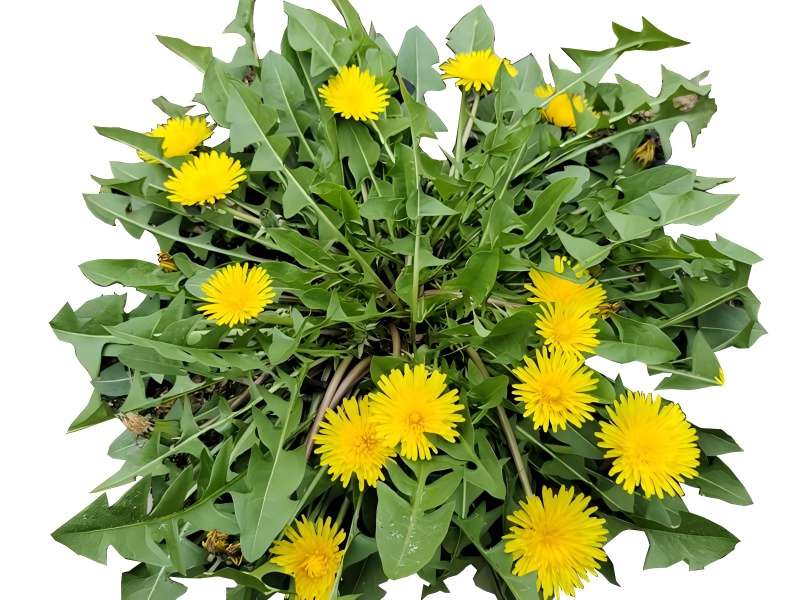
1 Analysis of the external application of dandelion preparations
1.1 Adjuvant treatment of mastitis
Li Xi [3] selected 80 outpatients with mastitis and randomly divided them into an experimental group and a control group. In addition to taking Dandelion Mastitis-Resolving Decoction, the experimental group also applied Chinese herbal medicine externally. Application method: After manual massage to drain the breast milk, the fresh dandelion flowers were cleaned and pounded, wrapped in clean gauze, and applied directly to the swollen and red breast mass. Cover with plastic wrap until the medicine solution dries. 1 time per day.
The control group took Dandelion Mastitis-Resolving Decoction, modified according to individual needs, internally while manual massage is performed to drain the breast, the method is the same as that of the experimental group. After 7 days, the overall effective rate of the experimental group applying dandelion externally was 97.5%, while the overall effective rate of the control group was 80.0%. This method has been shown to have significant efficacy in clinical studies, indicating that applying dandelion externally is more effective and faster than using traditional Chinese medicine internally to treat mastitis [4].
1.2 Adjuvant treatment of phlebitis
Dandelion is one of the commonly used medicines for the treatment of phlebitis in clinical practice [5]. Combined with other medicines, it can promote blood circulation and remove blood stasis, reduce swelling and resolve lumps, clear away heat and dampness, and soothe the liver and regulate qi. Local wet compress can promote blood circulation to achieve the purpose of treating phlebitis. Yimei Cui et al. [6] applied a Chinese medicine combination (dandelion + safflower + raw licorice + Glauber's salt) to the affected area by wet compress, achieving good results in the treatment of phlebitis. Yang Guanghui et al. [7] selected 80 cases of phlebitis patients in the outpatient and inpatient period for random assignment to an observation group and a control group.
The observation group used dandelion, blood essence and borneol for external application, mixed in a ratio of 10:1:1, and then mashed into a paste to apply around the diseased blood vessels; the control group used 50% magnesium sulfate to infiltrate and then apply around the patient's venous blood vessels. After 3 days of treatment, the statistics were taken. The observation group had 32 cured cases, 9 cases with obvious efficacy, 1 case with slight efficacy, with a total effective rate of 100%; the control group had 9 cases of complete recovery, 11 cases of marked efficacy, 6 cases of slight efficacy, and 12 cases of no effect, for a total effective rate of 68.42%. Explanation: The observation group's external application of dandelion and xuejie to treat phlebitis can relieve pain, with a good curative effect and no adverse reactions.
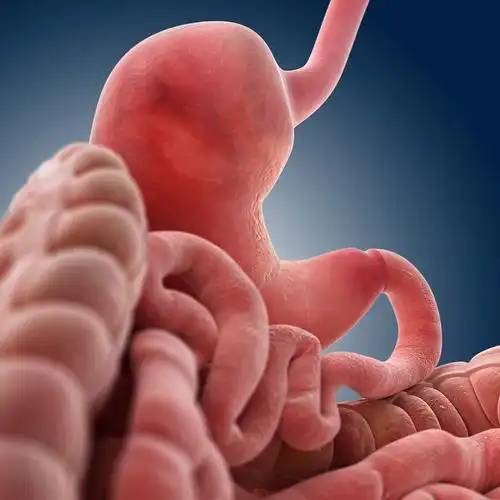
1.3 Auxiliary treatment of diabetic foot
As one of the complications of type 2 diabetes patients, diabetic foot is a syndrome caused by peripheral neuropathy and peripheral vascular disease combined with excessive mechanical pressure, leading to ischemia, ulcers and infections in the extremities. Chen Guang [8] selected 74 diabetic foot patients to explore the clinical efficacy of compound dandelion injection plus insulin external application in the treatment of diabetic foot. The patients were randomly divided into a dandelion external application group and a control group. Both groups were given routine treatments such as glucose-lowering and anti-infection treatments. The dandelion external application group was given compound dandelion injection + insulin-soaked gauze for external application to the local lesion on top of the routine treatments. The efficacy of the two groups was observed and compared, and the results showed that the therapeutic effect of the dandelion external application group was significantly higher than that of the control group (P<0.01). This shows that compound dandelion + insulin external application has a good effect on the treatment of diabetic foot.
1.4 Adjuvant treatment of acute cellulitis
Acute cellulitis is an acute diffuse, purulent infection of the subcutaneous tissue, subfascial, muscle space or deep cellulitis. The conventional treatment method is mainly antibiotics. Fan Xinfang et al. [9] selected 100 cases of early acute cellulitis and randomly divided them into a control group (antibiotic treatment) and a dandelion ointment external application treatment group, with 50 cases in each group, in order to observe the clinical efficacy of dandelion ointment external application in the treatment of acute cellulitis. The results showed that the effective cure rate in the treatment group was 96%, and the effective cure rate in the control group was 82%. This indicates that dandelion ointment applied externally can be used as an important adjuvant treatment for acute cellulitis.
1.5 Adjuvant treatment of frostbite
Wu Gang [10] used furacilin 1 g, fresh dandelion extract 2 mL and other excipients to make a dandelion compound cream, and applied different treatments to 40 patients in each of the observation and control groups with an average age of 21 years suffering from frostbite. The control group was routinely coated with ordinary topical furacilin ointment and bandaged with sterile dressings; the observation group was coated with dandelion compound cream, and if the finger (toe) was frostbitten, it was coated between the fingers (toes) and bandaged with sterile dressings. After 7 to 14 days of treatment, 14 cases in the control group were cured, and 35 cases in the observation group were cured. A comprehensive analysis showed that the dandelion compound cream has a definite curative effect on first- and second-degree frostbite.
1.6 Adjuvant treatment of postoperative skin soft tissue infections
Kuai Fei et al. [11] observed the clinical efficacy of 56 patients with mild infections after placement of skin soft tissue expanders. The patients were randomly divided into a control group and a treatment group. Both groups received intravenous injections of the antibiotic cefmenoxime. In addition, the control group was given wet compresses of 75% ethanol gauze, while the treatment group was given wet compresses of dandelion ethanol paste gauze. After two days of treatment, the clinical statistical cure rate of the treatment group was 100%; the cure rate of the control group was 82.1%. This shows that the external application of dandelion ethanol paste can assist in the treatment of mild infections after the placement of a skin soft tissue expander.
2 Analysis of the application of compound dandelion
2.1 Auxiliary treatment of gastrointestinal diseases
Patients with reflux esophagitis are mostly aged 30 to 59 years old, and their clinical symptoms include belching, acid regurgitation, dry mouth, heartburn, gastric distress, and epigastric pain. Treatment should focus on methods such as clearing away heat and drying dampness, tonifying the spleen and stomach, and nourishing the qi and yin. In a study by Li Xiuyu[13], 125 patients with gastritis in the treatment group took a decoction of white fungus and dandelion twice a day; the control group of 108 patients took 10 mg of metoclopramide orally three times a day, 0.5 mg of tinidazole tablets, Raltitrexed capsules 0.15 mg, twice a day. After 14 to 28 days of medication in the two groups, the total effective rate of complete remission in the treatment group was 92%; the total effective rate of complete remission in the control group was 75%. The difference between the two groups was significant. This shows that the compound dandelion has a better effect of clearing away heat and nourishing the body, and is more effective in the treatment of reflux esophagitis.
Postoperative gastrointestinal dysfunction is one of the main concerns in the postoperative care of patients undergoing abdominal surgery. Hou Qing et al. [14] gave 2 to 3 bottles of Shierwei Dandelion Syrup (12 Chinese herbs including dandelion and Andrographis) orally to patients based on ear acupressure, and compared the changes in serum pepsin and gastrin levels after treatment. The results showed that ear acupressure combined with the twelve-herb dandelion syrup treatment can significantly increase the body's pepsin and gastrin levels, and can significantly shorten the time for patients to experience the first bowel sounds and gas after surgery. It is speculated that the mechanism of action is due to the drug's scavenging effect on 2,2-diphenyl-1-pyridinium hydrazone (DPPH) free radicals, which protects living cells from oxidative damage induced by peroxyl radicals. At the same time, it promotes the recovery of gastrointestinal function after surgery by reducing oxidative stress.
Studies have shown that both Ge Gen Qin Lian Tang and dandelion have the effect of inhibiting ulcerative inflammation of the intestinal mucosa [15]. Dandelion 45 g, Pueraria root 20 g, Scutellaria root 20 g and Coptis root 10 g, decocted with water, filtered through double gauze to remove the dregs, and then used to enema the patient. The healing rate for ulcerative colitis is 90%. The mechanism of action may be due to the effective chemical components dandelion polysaccharides and sitosterol (TAX), which can effectively inhibit chronic inflammation and ulcerative lesions of the colonic mucosa, reduce the expression of inflammatory factors, and regulate the number of normal flora and probiotics, thereby exerting a good therapeutic effect [12, 16-17].
2.2 Adjuvant treatment of acute drug poisoning
Wang Wanwu [18] randomly divided 126 patients into a control group (63 cases) treated with conventional Western medicine methods and an observation group (63 cases) treated with compound glycyrrhizic acid monammonium combined with dandelion on the basis of conventional treatment. The results showed that the incidence of oral, liver and kidney damage, the incidence of lung damage, and the incidence of multiple organ dysfunction syndrome (MODS), pulmonary fibrosis, and death in the observation group were lower than those in the control group. This indicates that the clinical effect of compound glycyrrhizic acid monammonium combined with dandelion in the treatment of acute drug poisoning is good, and it can effectively improve the clinical symptoms of patients. It can be widely used in clinical treatment [19].
2.3 Adjuvant treatment of tonsillitis
Acute purulent tonsillitis (AST) in children is a common pediatric disease, and conventional treatment is mainly based on antibiotics. Cui Jingjing [20] conducted a group observation of 50 pediatric AST patients and showed that amoxicillin clavulanate potassium dry suspension + Potentilla anserine oral liquid had a better therapeutic effect than amoxicillin clavulanate potassium dry suspension alone. Potentilla anserine in Potentilla anserine oral liquid has anti-inflammatory and antiviral effects, When used in combination with other drugs, it can effectively inhibit the reproduction of bacteria and reduce the exudation of inflammatory cells [21]. Tan Yongmei et al. [22] used a randomized controlled trial to randomly divide 106 patients with AST into a penicillin group and a traditional Chinese medicine group. The traditional Chinese medicine group was given a traditional Chinese medicine compound dandelion decoction in addition to the same treatment as the penicillin group, for a course of 5 days. The results showed that the cure rate in the penicillin group was 52.0%, while the cure rate in the traditional Chinese medicine group was 82.0%. The difference was significant. There were no adverse reactions in the traditional Chinese medicine group, while a small number of patients in the penicillin group developed skin rashes. Therefore, Compound Dandelion has good efficacy and safety for the treatment of AST [23-24].
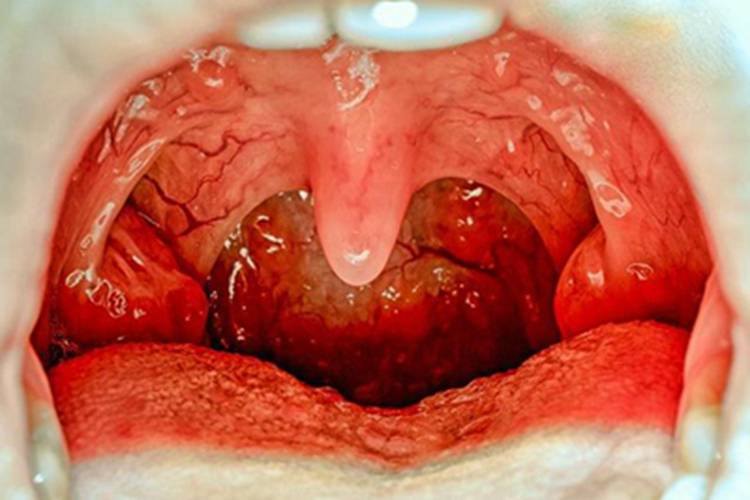
Acute tonsillitis is prone to relapse. Popovych et al. [25] conducted a study on patients with acute tonsillitis. A total of 238 outpatients aged 6 to 18 years were randomly selected. In addition to standard treatment, they were treated with extracts of Atractylodes rhizome, Chaenomeles flowers, Equisetum arvense, Juglans regia leaves, Oat grass, Quercus cortex and Taraxacum mongolicum for 28 days. the number of recurrences was observed, and the efficacy was evaluated during long-term follow-up. The results showed that during the one-year follow-up period, the number of recurrences of tonsillitis and the severity of local symptoms in patients treated with extracts such as dandelion were reduced compared to standard treatment.
2.4 Adjuvant treatment of bronchitis
Bronchitis is one of the common diseases in pediatrics, and the traditional Chinese medicine compound dandelion is widely used in the treatment of bronchitis. Wang Jianguo [26] randomly divided 122 hospitalized patients aged 6 months to 10 years with bronchitis into a treatment group and a control group. The control group was treated with drugs such as cefotaxime or cefazolin sodium, while the treatment group was treated with drugs such as compound dandelion injection by intramuscular injection. The cure rate of the treatment group was 82.5%, and the cure rate of the control group was 75.4%. The treatment group had a better effect than the control group. In recent years, studies have found that exhaled nitric oxide in asthmatic patients with negative bronchodilator tests is negatively correlated with airway responsiveness [27], and this conclusion can be used to study the specific treatment plan of dandelion extract in clinical bronchial treatment. Compound dandelion has the advantages of few toxic side effects and clear therapeutic effects, and is worth further promotion and use in the clinic.
2.5 Adjuvant treatment of breast hyperplasia
Breast hyperplasia is one of the common benign hyperplasia diseases of the breast, generally related to hormone levels or emotional disorders [28]. Its clinical manifestations are pain and lumps. Modern medical treatment of breast hyperplasia mainly uses sex hormone drugs or surgery, which may cause some adverse reactions [29]. With the increasing emphasis on traditional Chinese medicine, compound dandelion has been used to treat breast hyperplasia with definite results [30]. The use of Xiaojin pills in combination with dandelion to treat 54 patients with breast cystic hyperplasia achieved a 94.4% effective rate [31]. After the clinical treatment of breast hyperplasia patients with compound dandelion, breast pain was relieved, breast lumps disappeared, severe cases became mild, the clinical cure rate was improved, and there was no recurrence after recovery [32-34].
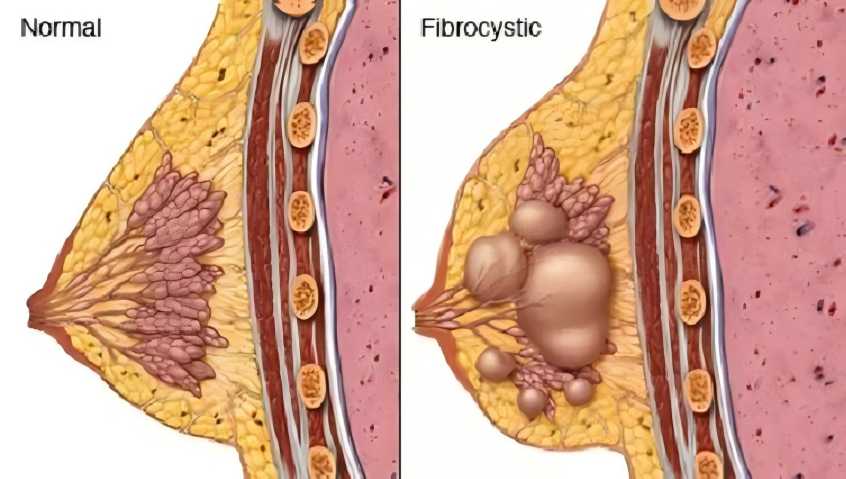
2.6 Adjuvant treatment of mastitis
Breast engorgement during lactation is one of the main causes of mastitis in the early stages. Some women suffer from mastitis during lactation, which is clinically manifested as bloating or redness, pain in a certain area, and fever [35-36]. Studies have found that Staphylococcus aureus is the main pathogen that causes mastitis during lactation [37]. Clinically, dandelion can be used in the treatment plan for this condition. The usual treatment methods are external application or acupressure to unblock the milk ducts and reduce milk stasis.
In a clinical study of dandelion and melon soup, it was found that dandelion and melon soup + manual therapy can appropriately improve the clinical cure rate of patients with lactation mastitis, improve the blockage of milk ducts, and promote milk discharge. Compared with manual milk drainage therapy alone, it can accelerate the resolution of local breast inflammation and the dissipation of lumps, while also increasing the breastfeeding rate [38]. Qiao Nan et al. [39] randomly divided 89 lactating mastitis patients into groups A, B, and C. Group B only underwent minimally invasive catheter drainage, group A orally took dandelion soup + minimally invasive catheter drainage, and group C orally took dandelion soup + incision catheter drainage. The results after treatment showed that group A had a shorter recovery time, less pain, and a faster recovery, suggesting that dandelion has definite efficacy for mastitis during breastfeeding. A clinical study of 140 patients with mastitis during breastfeeding found that dandelion decoction combined with Fuhuang cream bra treatment for acute mastitis during breastfeeding can improve patient symptoms and inflammation indicators, reduce antibiotic use, and is safe and effective [40].
The causes of mastitis during non-breastfeeding are mostly blood stasis and emotional distress. Conventional treatments can involve surgery or Western medicine. Currently, clinical treatments mostly combine Chinese and Western medicine, and the clinical cure rate is relatively high. Xu Qianqian[41] selected 130 clinical patients with early-to-middle-stage granulomatous mastitis and randomly divided them into two groups. The control group was given intravenous levofloxacin hydrochloride, while the treatment group was given heat-clearing and detoxifying drugs in the early stage, such as dandelion, Honeysuckle + Guaizhi-Niubao decoction, and in the medium term, heat-clearing and detoxifying drugs against dandelion and honeysuckle + Touxiu powder, with a course of treatment of 7 d. The results showed that dandelion has a definite curative effect in early and middle stage mastitis, which can reduce the redness, heat and pain of breast lumps in patients with mastitis, reduce the size of the lumps and even gradually eliminate them, and relieve clinical symptoms. Compound dandelion can be used to treat non-lactating mastitis. Its effect is to promote apoptosis by regulating the cell cycle, inhibit proliferation, regulate autophagy, resist invasion and metastasis, improve immunity, affect estrogen and inhibit related metabolic pathways to treat the lesion.
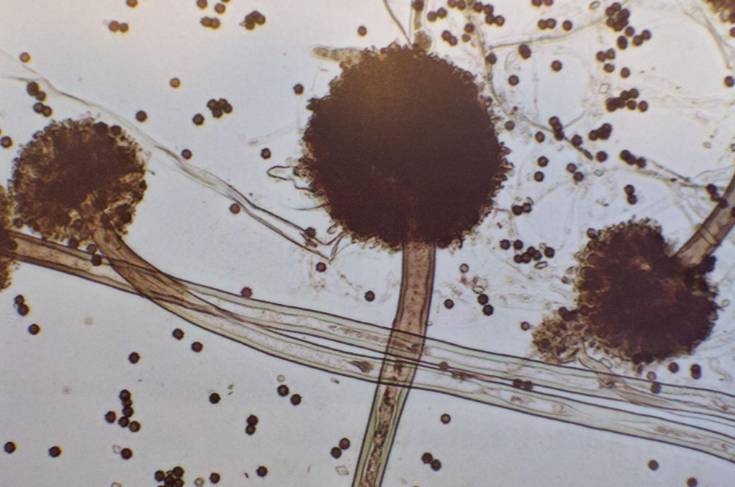
3 Analysis of the pharmacological effects of dandelion
3.1 Antioxidant activity
The main active ingredient in dandelion that exerts antioxidant properties is flavonoids. Flavonoids are polyhydroxy substances that can provide hydrogen atoms and bind with hydroxyl radicals (·OH) or DHHP· to reduce the number of free radicals and exert an antioxidant effect [42-47]. In studying the mechanism of dandelion total flavonoids on chronic obstructive pulmonary disease (COPD) model mice caused by tobacco smoke (CS), it was found that dandelion stem and leaf total flavonoids and root total flavonoids both have good antioxidant capacity. Dandelion total flavonoids can significantly inhibit the inflammatory response induced by CS in COPD mouse models. The total flavonoids in dandelion are associated with antioxidant signaling pathways [48].
3.2 Antibacterial activity
A study of the main components (phenolic substances, tocopherols and essential fatty acids) extracted from dandelion found that the extract had the strongest antibacterial activity against 23 foodborne pathogens (Micrococcus luteus and Bacillus subtilis), with an antioxidant half-inhibitory concentration (IC50 value) of up to 132.5 μg/mL, and the lowest antibacterial activity can reach 80.0 μg/mL [49]. Studies have found that the total flavonoids in dandelion are mostly flavonoid extracts, which have an inhibitory effect on Bacillus amyloliquefaciens, Escherichia coli and Aspergillus niger, with the best inhibitory effect on Bacillus amyloliquefaciens [50].
3.3 Anti-inflammatory activity
Studies have shown that for ulcerative colitis caused by combined dysbiosis, dandelion polysaccharides can inhibit the production of serum uric acid (UA) and neutrophils (NO) in mouse serum, reduce the expression of inflammatory factors, alleviate intestinal inflammatory response and tissue damage, regulate the number of normal flora and probiotics, and have a significant therapeutic effect on improving the intestinal dysfunction caused by lincomycin-induced intestinal flora imbalance in mice [17]. In exploring the anti-inflammatory effect of dandelion, it was found that the anti-inflammatory effect of fresh dandelion is better than that of dried dandelion. The content of secondary metabolites in fresh and dried dandelion is not much different, while the content of polysaccharides and proteins in primary metabolites differs greatly. The polysaccharide components in fresh dandelion are the main substance basis for exerting its heat-clearing and detoxifying effects [51].
3.4 Anti-cancer activity
The main active ingredients in dandelion can regulate the nuclear factor-kappa B (NF-kB) signaling pathway and the microbe-associated molecular patterns (MAMPs) signaling pathway, downregulating the expression of inflammatory factors such as tumor necrosis factor-α (TNF-α), interleukin-1β (IL-1β), and interleukin-6 (IL-6). It also regulates the cell cycle to promote apoptosis, inhibit proliferation, and regulate autophagy. IL-1β) and interleukin-6 (IL-6) inflammatory factor expression, and by regulating the cell cycle to promote apoptosis, inhibit proliferation, regulate autophagy, anti-invasion and metastasis, improve immunity, affect estrogen and inhibit related metabolic pathways, etc. to fight breast cancer [52].
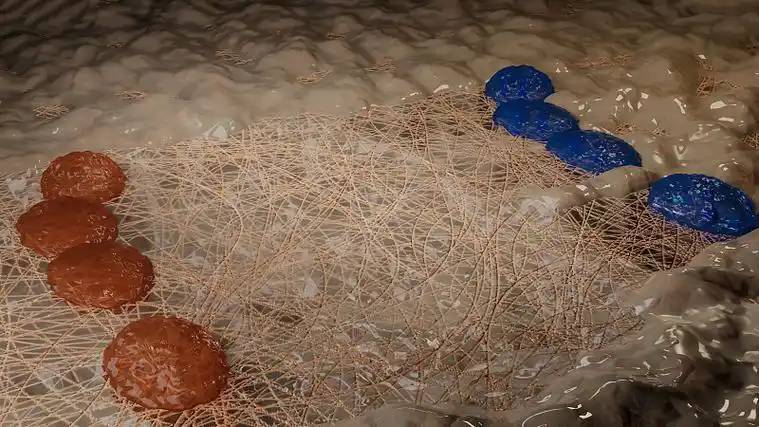
A database screening of the effective components of dandelion and their target sites revealed that dandelion's anti-breast cancer effect may be related to the transcription initiation process of the RNA polymerase II promoter, the DNA binding process, and nuclear chromatin. The results of KEGG analysis showed that dandelion's anti-breast cancer effect may involve cancer pathways, serotonin-containing synapses, and thyroid hormone signaling pathways. Molecular docking results showed that most of the effective components of dandelion have good binding activity with their key targets [53]. Research has found that the increase in cancer cells depends on iron, and dandelion polysaccharides can inhibit the growth of human liver cancer cells Huh7 and HepG2 in vitro by regulating iron metabolism, as well as inhibiting iron deposition in tumor tissues of mice with liver cancer Hepa1-6 and H22 cells [54-55].
3.5 Lipid-lowering activity
Dandelion leaves have a strong binding capacity for chlorogenic acid and sodium salt of bile acid, and exhibit a significant lipid-lowering effect [56]. Network pharmacology research shows that dandelion may act on carbonic anhydrase 2 (CA2), carbonic anhydrase 7 (CA7), aldose reductase (AKR1B1), and matrix metalloproteinase 2 (MMP2) through quercetin, isorhamnetin, kaempferol, quercetin, isorhamnetin, kaempferol, phosphoinositide-3-kinase (PI3K), mitogen-activated protein kinase (MAPK), advanced glycation end products (AGE) and AGE receptors (RAGE) and other signal pathways, thereby exerting its lipid-regulating effect [57-58].
3.6 Hepatoprotective activity
A comparative treatment study of mice with acute severe hepatitis found that taraxasterol from dandelion has a protective effect on the liver of mice with acute severe hepatitis caused by D-amino acid galactose/lipopolysaccharide (D-GalN/LPS). The mechanism of its hepatoprotective effect may be through upregulation of the signal transducer and activator of transcription 3 (SOCS3) cytokine, thereby regulating the tyrosine protein kinase 2/signal transducer and activator of transcription 3 (JAK2/STAT3) and the mitogen-activated protein kinase (JNK) signal pathways, and thereby inhibiting inflammation-related responses [59].
Taraxasterol can upregulate the expression of heme oxygenase-1 (HO-1), NQO1 and Nrf2 protein, and downregulate the overexpression of Keap1 protein. Taraxasterol can effectively reduce the autophagy caused by aflatoxin B1 (AFB1). Taraxasterol mainly protects against AFB1-induced liver cell damage by activating the Nrf2/Keap1 signaling pathway, enhancing the antioxidant capacity of cells, and regulating the expression of apoptosis and autophagy-related genes [60]. Dandelion sterols have a protective effect on the liver of mice with acute severe hepatitis caused by D-GalN/LPS. 10 mg/kg dandelion sterols can significantly reduce the levels of alanine aminotransferase and aspartate aminotransferase in mouse serum, as well as malondialdehyde (MDA), tumor necrosis factor and IL-6, IL-1β content in liver tissue, increase the activity of total superoxide dismutase (SOD) and glutathione peroxidase (GSH-Px) in liver tissue, down-regulate the expression of transcription factor 3 and p-aminoterminal kinase protein, and up-regulate the expression of SOCS3 protein, thereby inhibiting inflammatory response [59].
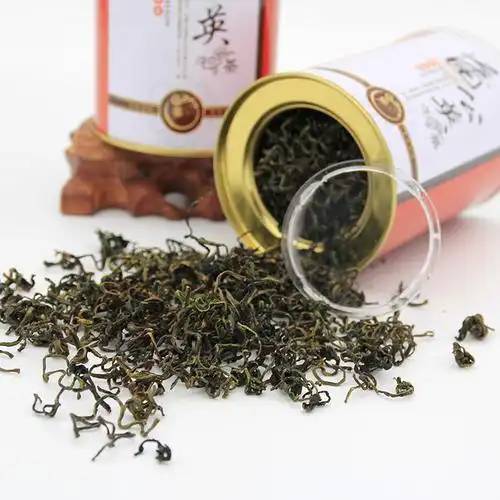
Dandelion total flavonoids have a certain preventive and protective effect on early liver damage caused by carbon tetrachloride (CCl4) in rats. Dandelion total flavonoids downregulate the expression of microRNA 122 (miR-122), reduce the MDA level in rat liver tissue and the activity levels of serum alanine aminotransferase (ALT), aspartate aminotransferase (AST) and alkaline phosphatase (ALP), etc., and increases the activity of SOD and the level of reduced glutathione (GSH) in liver tissue, improving the pathological damage to rat liver tissue [61].
4 Conclusion
Many studies have shown that dandelion is very rich in protein, amino acids, vitamins and carbohydrates, and contains a variety of active ingredients. Its pharmacological effects are diverse, and it has the advantage of being less toxic and side-effect prone, so it can be further promoted for clinical use [62-64]. Current pharmacological research has focused mainly on dandelion root extracts, and most of the pharmacological effects have been studied in vitro [65-66], with relatively little research on the human body. In the future, the pharmacological effects of dandelion components can be further explored.
With the help of traditional Chinese medicine theory and modern science and technology, the pharmacological mechanism of dandelion medicine can be thoroughly studied from multiple levels and in multiple directions, so as to develop more new types of traditional Chinese medicine and prescriptions. Research can also be carried out in the comprehensive utilization of medicine, medical cosmetology, new drug development, animal husbandry and breeding, food and health care, etc., so as to give full play to the wider application value of dandelion.
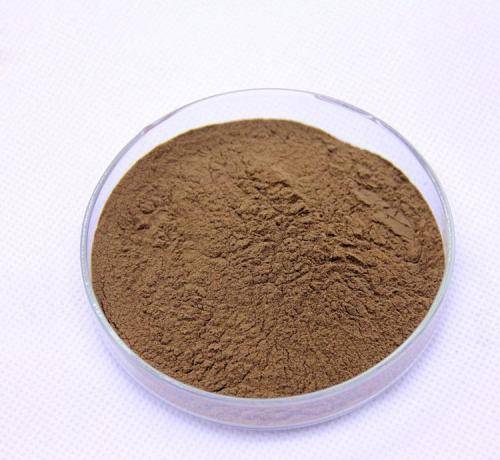
This study summarizes and analyzes the current status of clinical application research and the progress of pharmacological research on dandelion by reviewing literature. The study shows that dandelion preparations can be applied externally for the treatment of mastitis, phlebitis, diabetic foot, acute cellulitis, frostbite and postoperative soft tissue skin infections; compound dandelion can be used for the treatment of gastrointestinal diseases, acute drug poisoning, tonsillitis, bronchitis, breast hyperplasia and mastitis by injection or oral administration. Dandelion has pharmacological activities such as anti-oxidation, anti-bacterial, anti-inflammatory, anti-tumor, regulating blood lipids and protecting the liver. Overall, dandelion is rich in germplasm resources and diverse in active ingredients, and can be widely used in clinical practice.
References
[1] Hao Wenli, Mu Chaochao. Medicinal value of fresh dandelion [J]. Open book is beneficial – seeking medical advice, 2017 (10): 65-66.
[2] Zhang Ru. Modern application of dandelion [J]. Henan Traditional Chinese Medicine, 2020, 40 (5): 802-806.
[3] Li X. Clinical observation on the treatment of early stage mastitis with Ruyu San internal administration combined with dandelion external application [J]. Journal of Practical Traditional Chinese Medicine, 2015, 31(12): 1101-1102.
[4] Luo L, Wei G, Huang F, et al. Clinical study on the treatment of postpartum breast swelling with dandelion root mashed and applied externally [J]. Chinese Journal of Maternal and Child Health, 2012, 27(10): 1580-1582.
[5] Yu Haiyuan. A literature-based study of the rules for using traditional Chinese medicine to treat thrombophlebitis [D]. Jinan: Shandong University of Traditional Chinese Medicine, 2015.
[6] Yi Meicui, Wang Chunmin. Treatment of phlebitis with Chinese herbal medicine poultices [J]. Henan Traditional Chinese Medicine, 2004, 24(12): 27.
[7] Yang Guanghui, Yang Wei. Observation on the efficacy of fresh dandelion plus xuejie and bufen applied externally in the treatment of phlebitis [J]. Shandong Medicine, 2017, 57(6): 92-94.
[8] Chen Guang. Observation on the efficacy of compound dandelion injection plus insulin external application in the treatment of diabetic foot [J]. Chinese Journal of Modern Drug Application, 2016, 10(11): 268-269.
[9] Fan Xinfang, Wang Wei, Huang Guilian. Observation on the efficacy of dandelion ointment external application in the treatment of 50 cases of early acute cellulitis [J]. Hainan Medical Journal, 2010, 21(8): 135-136.
[10] Wu G. Clinical observation on the treatment of first- and second-degree frostbite with DA dandelion compound cream [J]. Journal of Mudanjiang Medical College, 2006(5): 42.
[11] Kuai F, Jian C, Ma XJ, et al. Clinical observation of the efficacy of dandelion in the adjuvant treatment of mild infections after placement of a skin soft tissue expander [J]. Tianjin Traditional Chinese Medicine, 2015, 32(7): 405-409.
[12] Zhang Yiteng. A data mining-based study of Professor Zhou Zhongying's clinical experience in the diagnosis and treatment of reflux esophagitis [D]. Nanjing: Nanjing University of Traditional Chinese Medicine, 2021.
[13] Li Xiu-yu. Clinical observation on the treatment of reflux gastro-esophagitis with Baiji and dandelion [J]. Chinese Herbal Medicine, 2003, 34 (11): 1037.
[14] Hou Qing, Wang Yang. Clinical efficacy of ear acupressure combined with dandelion syrup on gastrointestinal function after gynecological surgery [J]. Journal of Inner Mongolia Medical University, 2020, 42(3): 249-251.
[15] YUAN Y, CHEN H W. Clinical observation on treatment of ulcerative colitis with Ge Gen Qin Lian Tang plus dandelion enema [J]. Advances in Modern Biomedicine, 2007, 7(9): 1336-1337.
[16] LI C, WANG M, CHEN X Q, et al. Taraxasterol ameliorates dextran sodium sulfate-induced murine colitis via improving intestinal barrier and modulating gut microbiota dysbiosis [J]. Acta biochimica et biophysica sinica, 2022, 54(3): 340-349.
[17] Zhou Yani, Guo Yaodong, Liu Chengfei, et al. Research on the regulation of intestinal flora and anti-inflammatory effect of dandelion polysaccharide on mice with ulcerative colitis and dysbiosis [J]. Biomedical Engineering and Clinical, 2022, 26(4): 414-419.
[18] Wang Wanwu. Clinical efficacy of compound glycyrrhizic acid monammonium combined with dandelion in the treatment of acute paraquat poisoning [J]. Guangming Traditional Chinese Medicine, 2017, 32(8): 1167-1169.
[19] Liang Aming, Lv Guowei, Han Yina. Effects of glycyrrhizic acid on serum platelet-derived growth factor (PDGF), interleukin 17 (IL-17), monocyte chemotactic protein-1 (MCP-1), and serum response factor (SRF) in glioma patients [J]. Pharmacology and Clinical of Traditional Chinese Medicine, 2016, 32 (1): 163-166.
[20] Cui Jingjing. Clinical analysis of the combined treatment of acute purulent tonsillitis in children with amoxicillin clavulanate potassium dry suspension and puerarin anti-inflammatory oral solution [J]. China Medical Abstracts (Otorhinolaryngology), 2023, 9 (5): 6-8.
[21] He Lifen, Li Wei, Lin Shulin, et al. Efficacy analysis of mezlocillin sodium-sulbactam sodium and amoxicillin sodium-clavulanic acid potassium for acute purulent tonsillitis in children [J]. Strait Pharmacy, 2021, 33(1): 140-141.
[22] Tan Yongmei, Wang Lihua, Chen Shengkai. Clinical observation on the treatment of acute purulent tonsillitis with Compound Dandelion Decoction [J]. Journal of Anhui College of Traditional Chinese Medicine, 2010, 29(4): 9-12.
[23] Wang P. Clinical effect of Dandelion Capsule combined with cefaclor in the treatment of tonsillitis [J]. Chinese Rural Health, 2020, 12(24): 35, 66.
[24] YANG Yatien, GUO Huiyi, XIA Jun. Clinical study on the treatment of tonsillitis with dandelion capsule combined with cefaclor [J]. Modern Drugs and Clinics, 2018, 33(3): 609-612.
[25] POPOVYCH V, KOSHEL I, MALOFIICHUK O, et al. A randomized, open-label, multicentre, comparative study of therapeutic efficacy, preventive potential and tolerability of BNO 1030 extract, containing Althea root, Chamomile flowers, horsetail herb, walnut leaves, yarrow herb, oak bark, dandelion herb in the treatment of acute non-bacterial tonsillitis in children aged 6 to 18 years [J]. Clinical phytoscience, 2021, 7: 15.
[26] Wang Jianguo. Clinical analysis of 61 cases of bronchial pneumonia treated with compound dandelion [J]. Chinese Journal of Modern Medicine, 2011, 13(2): 15.
[27] Aiketon, Wuzhifeng, Shangmiaomiao, et al. Relationship between exhaled nitric oxide and airway responsiveness in asthmatic patients with negative bronchodilator tests [J]. Journal of Practical Cardiology, 2023, 31(11): 50-52, 62.
[28] Li Xiaolei, Wang Xiaoqi, Zheng Yuqiang, et al. Clinical observation on the treatment of mastopathy with Ruxin Capsule combined with Chuanxiong Zhen injection [J]. Chinese Journal of Traditional Chinese Medicine, 2023, 41(2): 193-195.
[29] Xie Saifeng, Fu Lihong. Research overview of Chinese and Western medicine for the treatment of mastopathy [J]. Chinese National and Folk Medicine, 2019, 28(2): 53-55.
[30] Li Heyun, Zeng Fangxing, Zhu Ruixue, et al. Clinical application and dosage of dandelion [J]. Jilin Traditional Chinese Medicine, 2019, 39(10): 1291-1293.
[31] Wang Haixia, Li Ying. Observation on the efficacy of Xiaojin Wan and dandelion tablets in the treatment of 54 cases of breast cystic hyperplasia [J]. Chinese Community Physician (Medical Profession), 2012, 14 (19): 219.
[32] Pan Hua, Zhang Chi. Treatment of 66 cases of mastopathy with Ruibi Xiaopian [J]. Shaanxi Traditional Chinese Medicine, 2005, 26 (12): 1327-1328.
[33] Qin Li, Li Ming. Treatment of 90 cases of breast hyperplasia with Yiqi Jieyu decoction combined with tamoxifen tablets [J]. Research in Chinese Medicine, 2013, 26 (9): 24-26.
[34] Huang Wei, Zhang Wei. Observation on the efficacy of 120 cases of breast hyperplasia treated with Chinese medicine internal medicine and smelling and inhaling the smell of Chinese medicine [J]. Jilin Traditional Chinese Medicine, 2012, 32(11): 1126-1127.
[35] Wei Lingli, Huang Zhongjun. Prevention and treatment of mastitis in the puerperium [J]. Chinese Journal of Practical Gynecology and Obstetrics, 2008, 24(11): 819-820.
[36] Xu Liqin. Effect of manual breast massage combined with low-frequency pulse therapy on breastfeeding and prevention of mastitis in the puerperium [J]. Practical Clinical Nursing E-Journal, 2020, 5(2): 105.
[37] Wang Libin, Yang Liu, Qu Lei, et al. Distribution and drug resistance characteristics of pathogens causing acute mastitis during lactation [J]. Chinese Journal of Women's and Children's Health, 2020, 31(8): 1030-1034.
[38] Yin Fei, Ni Yi, Liu Wei, et al. Clinical observation on the treatment of lactation mastitis with dandelion and melon seed decoction [J]. Guangming Traditional Chinese Medicine, 2022, 37(15): 2694-2696.
[39] Qiao Nan, Ding Xiaowen, Ni Yusheng. Clinical observation on the efficacy of integrated traditional Chinese and Western medicine in the treatment of acute mastitis with abscess formation during lactation.
[40] Qiao N, Fang Y, Tao Y, et al. Clinical observation on the treatment of acute lactation mastitis (liver-stomach stagnation pattern) with dandelion decoction combined with fu huang paste bra [J]. Chinese Journal of Traditional Chinese Medicine Emergency, 2020, 29(11): 1940-1943.
[41] Xu Qianqian. Clinical efficacy of heat-clearing and detoxifying method in the treatment of early and middle-stage granulomatous mastitis and its inhibitory effect on common pathogenic bacteria [D]. Jinan: Shandong University of Traditional Chinese Medicine, 2021.
[42] MORGAN X C, TICKLE T L, SOKOL H, et al. Dysfunc- tion of the intestinal microbiome in inflammatory bowel disease and treatment [J]. Genome biology, 2012, 13(9): R79.
[43] LLOYD-PRICE J, ARZE C, ANANTHAKRISHNAN A N, et al. Multi-omics of the gut microbial ecosystem in inflammatory bowel diseases [J]. Nature, 2019, 569(7758): 655-662.
[44] Zhou Mengjiao. Study on the extraction and antioxidant properties of flavonoids from bamboo leaves and pepper [D]. Mianyang: Southwest University of Science and Technology, 2021.
[45] Zhu Qingli, Wang Jiayi, He Wang, et al. Study on the extraction process, in vitro antioxidant activity and antibacterial activity of dandelion total flavonoids [J]. Journal of Jinling Institute of Technology, 2022, 38 (2): 86-92.
[46] Yang Xiaojie, Zheng Yunji, Li Na, et al. Study on the antibacterial and antioxidant properties of Asian dandelion polysaccharides [J]. Shizhen National Medicine, 2012, 23 (1): 109-110.
[47] Pan Ting, Ku Guifu, Cai Fenglong, et al. Study on the extraction process and in vitro antioxidant activity of dandelion polysaccharides [J]. New Agriculture, 2018 (15): 8-10.
[48] WANG C, CHEN F, HU K, et al. Antioxidant protection and mechanism of dandelion total flavonoids against chronic obstructive pulmonary disease caused by tobacco smoke.
[49] MILOVANOVIC S, GRZEGORCZYK A, ŚWIĄTEK Ł, et al. Phenolic, tocoferol, and essential fatty acid-rich extracts from dandelion seeds: chemical composition and biological activity [J]. Food and Bioproducts Processing, 2023, 142: 70-81.
[50] Chen Q. Study on the changes of polyphenols in different parts of dandelion and their antibacterial effects [D]. Yangling: Northwest A&F University, 2023.
[51] Zhang Z, Ma Q, Wang Y, et al. Research progress on the basis of dandelion medicinal substances [J]. Chinese Journal of Traditional Chinese Medicine, 2022, 40(11): 148-152.
[52] Zhang W K, Cheng X F, Li Z K, et al. Research progress on the mechanism of dandelion's effect on the treatment of breast diseases [J]. Chinese Journal of Traditional Chinese Medicine, 2024, 42(2): 212-216.
[53] Yuan Xinyi, Zeng Shuxin, Yang Run, et al. Research on the mechanism of dandelion's anti-breast cancer based on network pharmacology and molecular docking [J]. Tianjin Traditional Chinese Medicine, 2023, 40(1): 110-116.
[54] ABEDI M, RAHGOZAR S. Puzzling out iron complications in cancer drug resistance [J]. Critical reviews in oncology/hematology, 2022, 178: 103772.
[55] REN F, YANG Y Y, WU K X, et al. The effects of dandelion polysaccharides on iron metabolism by regulating hepcidin via JAK/STAT signaling pathway [J]. Oxidative medicine and cellular longevity, 2021, 2021: 7184760.
[56] YIN J L. Study on the extraction process of chlorogenic acid from dandelion leaves and its in vitro lipid-lowering effect [D]. Changchun: Changchun University of Technology, 2021.
[57] Liu Zhaowei, Ren Yiran, Liu Yifei, et al. Discussion on the active ingredients and mechanism of dandelion improving hyperlipidemia based on UHPLC-LTQ-Orbitrap-MS/MS technology and network pharmacology [J]. Modern Drugs and Clinical Practice, 2023, 38(9): 2133-2145.
[58] Zhao Xiu, Li Qing, Duan Hongquan, et al. Effects of dandelion decoction combined with blood glucose and lipid levels in diabetic mice [J]. Shandong Medicine, 2014, 54(11): 29-31.
[59] Yin Yifan, Li Hewei, Tao Tianxiu, et al. Research on the protective effect of dandelion sterols on acute severe hepatitis based on the JAK2/STAT3 and JNK signaling pathways [J]. Pharmacology and Clinical of Traditional Chinese Medicine, 2023, 39 (8): 57-61.
[60] Wang Meng. Study on the protective effect of dandelion sterols on AFB1-induced damage to primary chicken hepatocytes [D]. Yanji: Yanbian University, 2022.
[61] Zhu Zhengwang, Fu Shuangnan, Xue Ning, et al. Protective effect of dandelion total flavonoids on CCl4-induced liver damage in rats [J]. Traditional Chinese Medicine,2022,44(11): 3680-3686.
[62] SUN S X,WANG X,LIN L,et al. Research progress and quality marker prediction analysis of Taraxacum mongolicum [J]. Shandong Journal of Traditional Chinese Medicine,2023,42(7):773-780.
[63] ZHANG Y, HU Y F, LI W, et al. Updates and advances on pharmacological properties of Taraxacum mongolicum Hand.-Mazz and its potential applications [J]. Food chemistry, 2022, 373(Pt A): 131380.
[64] LIS B, OLAS B. Pro-health activity of dandelion (Taraxacum officinale L.) and its food products-history and present [J]. Journal of functional foods, 2019, 59: 40-48.
[65] Jiang Xuebing, Wang Zhibin, Sun Yanping, et al. Chemical composition of dandelion root in Northeast China [J]. Traditional Chinese Medicine, 2023, 45(6): 1887-1891.
[66] Li Xinguo, Meng Weishuang, Huang Wenyu, et al. In vitro antibacterial activity of dandelion root extract and its clinical application in broiler chickens [J]. Feed Industry, 2023, 44(8): 41-45.


 English
English French
French Spanish
Spanish Russian
Russian Korean
Korean Japanese
Japanese






